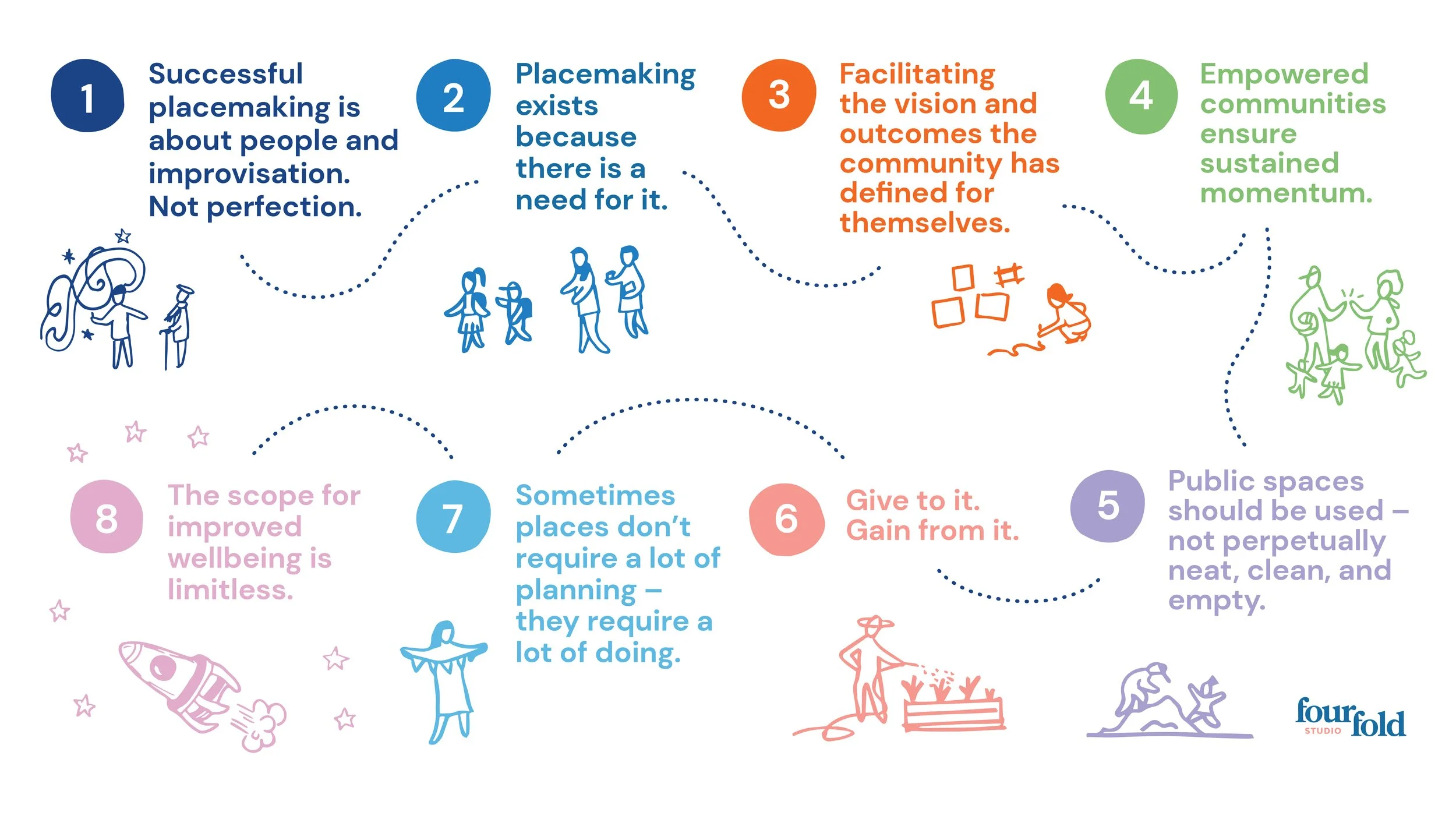Key Takeaways from The Place Man Documentary
Our eight key takeaways from The Place Man.
Recently Fourfold’s founder and director Brooke Williams spoke on a panel for the local premiere of The Place Man (2024) by Guillermo Bernal. This documentary follows Fred Kent, a central figure in the development of the concept of placemaking, and his passion for creating public spaces for people. Below are some of the key takeaways identified relating to placemaking and its role in urban environments.
1) Successful placemaking is about people and improvisation. Not perfection.
As much as we might like to make carefully laid plans, often it is the spontaneous and unpredictable moments that create the most meaningful interactions. Successful placemaking seeks to foster an environment where these interactions can unfold naturally.
2) Placemaking exists because there is a need for it.
Placemaking arose as a reaction to the lifelessness that was observed in New York City in the 70s, and a growing need for people to feel connected to both their community and local area. This disconnection from places and each other still remains so pervasive, therefore, placemaking is such a necessary tool to remedy this isolation and improve wellbeing outcomes.
3) Facilitating the vision and outcomes the community has defined for themselves.
Our role as placemakers is not to be the star of the show, in fact, with enough time the community might not even remember who we are – which is a success! Placemaking is about facilitating and providing a space for the community to take charge and implement their unique vision. Therefore, when communities are mobilised and can take matters into their own hands, our role as facilitators to this process has been achieved.
4) Empowered communities ensure sustained momentum.
Communities are at their best when they are active and mobilised, especially over a long period. Burn-out is a challenge that arises when the community lacks the support that is necessary to maintain the momentum that placefulness requires. Therefore, within the development process, it is important to consider the legacy of place, and how it can continue thriving after the initial boom.
5) Public spaces should be used – not perpetually neat, clean, and empty.
While neat and clean are often attributes of an urban environment, when places are too sterile, they do not foster the interest or excitement that attracts people to come and stay in a public space. Therefore, focusing on interesting human centric design will create a neat, clean, and bustling built environment.
6) Give to it. Gain from it.
Recognising the importance of community engagement within the development process has compounding benefits which amount to much larger than the initial investment. As Fred Kent explains in The Place Man (2024) “if you plan for people and places, you get more people in places”.
7) Sometimes places don’t require a lot of planning – they require a lot of doing.
Most placemakers are doers themselves first and have had a go at making change and wanting to share and grow the positive impacts. This is also often the case for community partnerships where people create jobs from their own passion.
8) The scope for improved wellbeing is limitless.
It is well-understood that quality public spaces can be enormously beneficial for inter-community relationships, however, the wellbeing outcomes stretch much further. Fred Kent explores this in The Place Man (2024) where he acknowledges that a wide-spread transformation towards making the lives of communities better is so valuable for addressing global challenges.
We loved the film and the great conversation at the Brisbane screening. If you missed out, don't worry! You can find out more about The Place Man documentary and watch the full version here.
Brooke Williams from Fourfold Studio speaks on a Panel with Peter Hyland (Urbis), Bec Mac (Queensland Labour) and Jonathan Sriranganathan (Queensland Greens) at a screening of The Place Man in Brisbane.


